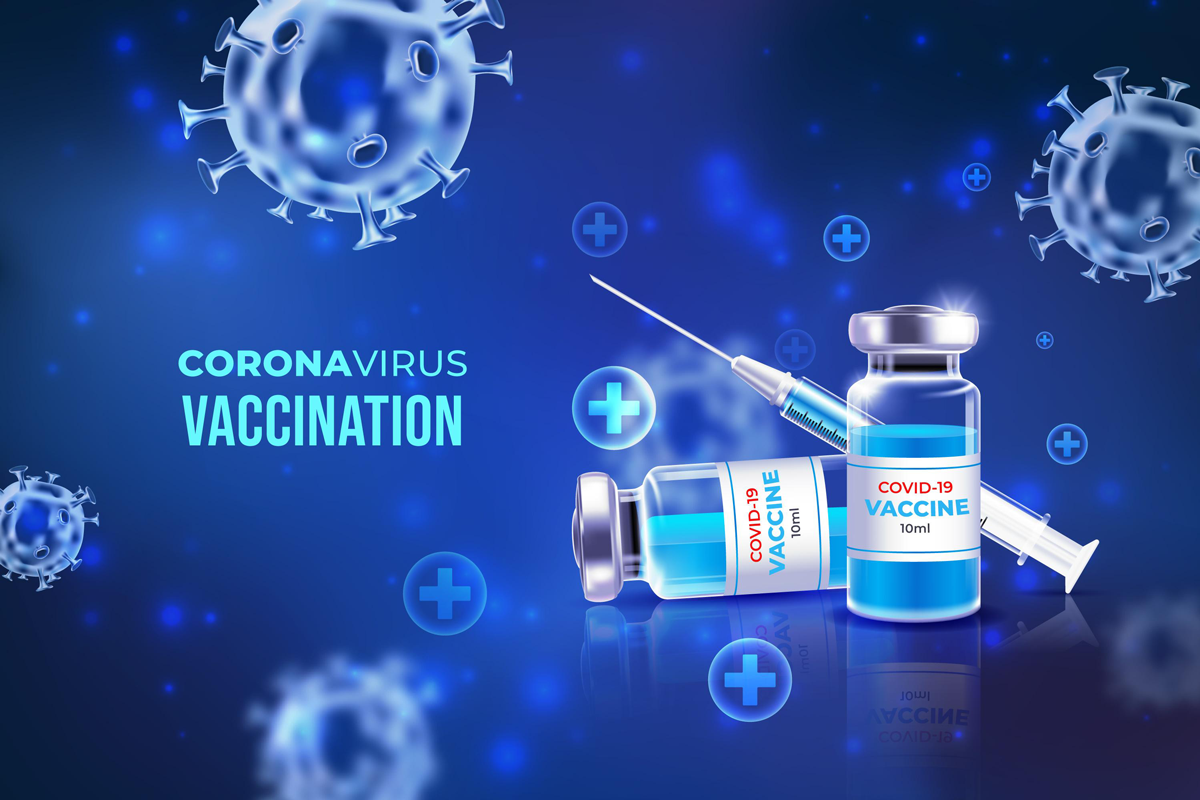Since 2021, occupational safety and health agencies have enacted a variety of rules addressing the workplace hazards of the COVID-19 pandemic. Agencies have generally used their emergency authority, which allow more administrative leeway to speed enactment but then require automatic expiration within months (although re-enactments are possible). I’ve written about a number of these efforts, including the federal Occupational Safety and Health Administration (OSHA) “emergency temporary standard (ETS),” which was stymied by litigation (see HERE). Some states have enacted their own ETSs; California adopted its own ETS and then readopted it every 180 days in order to keep rules in force (see HERE).
Read MoreAudit, Compliance and Risk Blog
California adopts nonemergency COVID vaccination and testing rules
Posted by Jon Elliott on Mon, Jan 23, 2023
Tags: Coronavirus, Covid-19, California
BC Supreme Court finds that Covid-19 closures did not "frustrate" employment contract
Posted by Jon Elliott on Wed, Jan 18, 2023
The many orders and rules issued by public and occupational health agencies in response to the COVID-19 pandemic create massive disruptions to employment relationships at organizations worldwide. The Supreme Court of British Columbia recently considered a wrongful dismissal lawsuit following one employer’s response to BC provincial health orders affecting the place of employment. The court acknowledged the significant disruptions to ongoing activities, but refused to apply the doctrine of “frustration” to relieve he employer of notice and severance duties to its employees. The remainder of this blog discusses this case (Fanzone v 516400 B.C. Ltd., 2022 BCSC 2089 (CanLII)).
Read MoreTags: Coronavirus, Covid-19, Employment, Employment Law, Supreme Court
Do you check for mold when reopening after COVID lockouts?
Posted by Jon Elliott on Wed, Apr 14, 2021
As vaccinations begin to bring the COVID-19 pandemic under control, more employers are moving to reoccupy and reopen workplace areas, many of which have been closed for months. During those times, residual moisture from reduced space conditioning or under-maintained facilities may have increased the possibility of mold infestations, which might endanger people returning to your workplace. This risk makes it a good time to review basic approaches to mold remediation. The remainder of this note reviews guidance from the US Centers for Disease Control and Prevention (CDC), Occupational Safety and Health Administration (OSHA), and Environmental Protection Agency (EPA).
Read More
Tags: EPA, mold, Coronavirus, CDC, Covid-19
Many of President Biden’s immediate priorities relate to the federal government’s response to the COVID-19 pandemic. These include worker protection measures, which generally fall within the purview of the Occupational Safety and Health Administration (OSHA). Executive Order (EO) 13999 of January 21, 2021 (Executive Order on Protecting Worker Health and Safety) directs OSHA to rapidly enhance COVID-19 protection activities. The EO directed OSHA to update worker protection guidance to employers within two weeks, which OSHA met by publishing “Protecting Workers: Guidance on Mitigating and Preventing the Spread of COVID-19 in the Workplace,” which I discussed HERE.
Read MoreTags: Health & Safety, OSHA, Coronavirus, CDC, Covid-19, NEP, NAICS
First CDC guidance to people vaccinated against COVID provides little guidance for employers
Posted by Jon Elliott on Tue, Mar 09, 2021
After a year of the COVID-19 pandemic, vaccines are finally in distribution and beginning to affect health and safety measures underway by agencies, employers and the public. On March 8, 2021, the Centers for Disease Control and Prevention (CDC) issued “Interim Public Health Recommendations for Fully Vaccinated People.” These new guidelines are directed to individuals, but employers should consider their implications when deciding what to tell their individual employees and customers how to approach the business. The short version: organizations shouldn’t ease up on protective measures undertaken in compliance with guidance from CDC, the Occupational Safety and Health Administration (OSHA) and other agencies. I provide more detailed discussion in the remainder of this note.
Read More
Tags: Health & Safety, Coronavirus, Covid-19, Vaccine, Immunization, Vaccination
Among President Biden’s flurry of first-week executive orders (EOs) is one entitled “Protecting the Federal Workplace and Requiring Mask-Wearing” (EO 13991). This EO states the administration’s policy “It is the policy of my Administration to halt the spread of … COVID–19 by relying on the best available data and science-based public health measures. Such measures include wearing masks when around others, physical distancing, and other related precautions recommended by the Centers for Disease Control and Prevention (CDC).” The EO, and guidance to agencies issued by the Office of Management and Budget (OMB), provide directions to federal agencies. They can also provide useful guidance to non-federal organizations in which most employees work in office settings. The rest of this note discusses a January 24, 2021 OMB memorandum to agency heads entitled “COVID-19 Safe Federal Workplace: Agency Model Safety Principles,” which incorporates CDC guidance.
Read More
Tags: Health & Safety, Coronavirus, Covid-19, OMB, EO 13991
For nearly a year now, the Occupational Safety and Health Administration (OSHA) and other agencies have been issuing guidance to employers regarding COIVD-19, including identification, protection, and back-to-work procedures. One of incoming President Biden’s first Executive Orders (EO 13999 of January 21, 2021) directs OSHA to issue updated worker protection guidance to employers within two weeks. On January 29, OSHA met this requirement by publishing “Protecting Workers: Guidance on Mitigating and Preventing the Spread of COVID-19 in the Workplace,” which it explains is intended for employers and workers to use to identify risks and plan responses. The remainder of this note summarizes OSHA’s new guidance.
Read More
Tags: Health & Safety, OSHA, EEOC, Coronavirus, CDC, Covid-19
EEOC provides guidance for employer requirements for COVID-19 vaccinations
Posted by Jon Elliott on Mon, Jan 04, 2021
Now that vaccinations against COVID-19 infections are becoming available, employer responses to the pandemic will include when to recommend, support, or even require employee vaccinations. While workplace safety considerations might support all these efforts, the Equal Employment Opportunity Commission (EEOC) has just issued a reminder that the Americans with Disabilities Act (ADA) and Title VII of the Civil Rights Act of 1964 require employers to craft their vaccination policies in ways that won’t violate anti-discrimination provisions. The remainder of this note discusses EEOC guidance published on December 16, 2020.
Read MoreTags: Health & Safety, EEOC, Coronavirus, CDC, Covid-19, ADA, Vaccine, Immunization, Vaccination
OSHA recommends employers consider whether COVID-19 risks affect workplace ventilation
Posted by Jon Elliott on Tue, Dec 22, 2020
The US Occupational Safety and Health Administration (OSHA) requires employers to ensure workplace air quality, as part of the agency’s broad mission to protect workers’ safety and health. Instead of a single comprehensive standard, OSHA incorporates air-related issues into standards requiring employers to consider whether workplace conditions might require respiratory protections (which I discussed HERE), and additional standards addressing routine workplace air contaminants (which I discussed HERE), and special hazards of confined spaces (which I discussed HERE). OSHA also applies specific ventilation standards in workplaces that involve abrasive blasting; grinding, polishing, and buffing operations; and spray finishing operations.
Read MoreTags: Health & Safety, OSHA, Coronavirus, Covid-19
COVID masks may or may not be required by worker protection agencies
Posted by Jon Elliott on Mon, Dec 21, 2020
The US Occupational Safety and Health Administration (OSHA) requires that employees wear personal protective equipment (PPE) necessary to help protect them against identified workplace hazards. This equipment may protect against physical hazards—hard hats, safety glasses, tinted goggles, steel-toed shoes—or may protect against health hazards—respirators, self-contained breathing apparatus, gloves. OSHA does not formally consider cloth facemasks to be PPE, but does consider them “source control” that may prevent an infected person from spreading the virus – which means that they do provide protection to co-workers. OSHA and most other health and safety agencies therefore do at least recommend masks, and some require them in specified settings. The remainder of this note discusses agencies’ formal provisions regarding masks.
Read More
Tags: Health & Safety, Coronavirus, Covid-19, PPE










